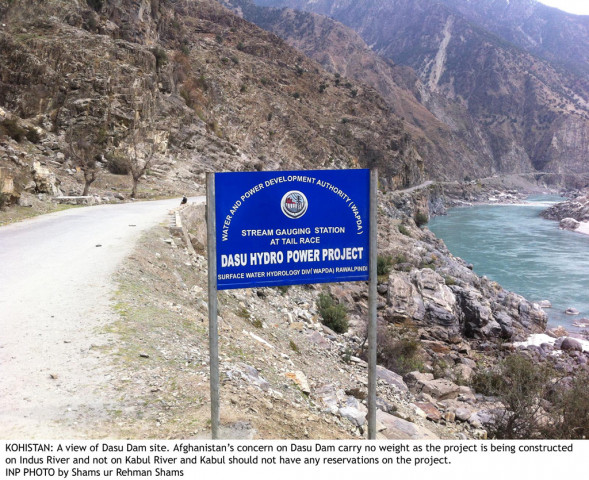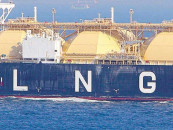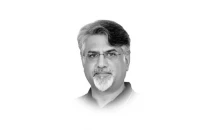Moving forward on Dasu Dam
Hydroelectricity is the only long-term solution to Pakistanis’ insatiable and growing appetite for cheap electricity.

The World Bank is expected to approve $4.5 billion in financing for the project later next month. PHOTO: INP

Dasu is meant to be one of the largest hydroelectric power projects in Pakistan, with an installed capacity of 4,320 megawatts, and an expected cost of just over $7 billion (a number that is likely to rise). It is also a project that appears most likely to proceed to actual construction, since the last political hurdle appears to have been overcome with Kabul’s acquiescence, and the World Bank is expected to approve $4.5 billion in financing for the project later next month. For a moment it looked as though the water and power ministry’s bungling of the proposal may have scuttled the project, but thankfully, cooler heads have prevailed. If, after going through all of these hurdles, the Dasu Dam still does not get built, heads must roll.
What is most encouraging, however, is the fact that the Dasu Dam appears to be part of the government’s larger strategy of building more hydroelectric power capacity, a process that has largely been stagnant since the completion of the Tarbela Dam in 1976. Private sector players are being encouraged to build and finance dams and other hydroelectricity projects throughout the country. And the government appears more serious than ever before in getting even the more politically contentious dams like Diamer-Bhasha through the bureaucratic morass that often ties down large infrastructure projects.
Hydroelectricity is the cheapest, cleanest, and most efficient source of power known to humans. It is the only long-term solution to Pakistanis’ insatiable and growing appetite for cheap electricity. The government is taking many of the right steps to develop this resource. We just hope these efforts do not go to waste.
Published in The Express Tribune, April 16th, 2014.
Like Opinion & Editorial on Facebook, follow @ETOpEd on Twitter to receive all updates on all our daily pieces.














COMMENTS
Comments are moderated and generally will be posted if they are on-topic and not abusive.
For more information, please see our Comments FAQ